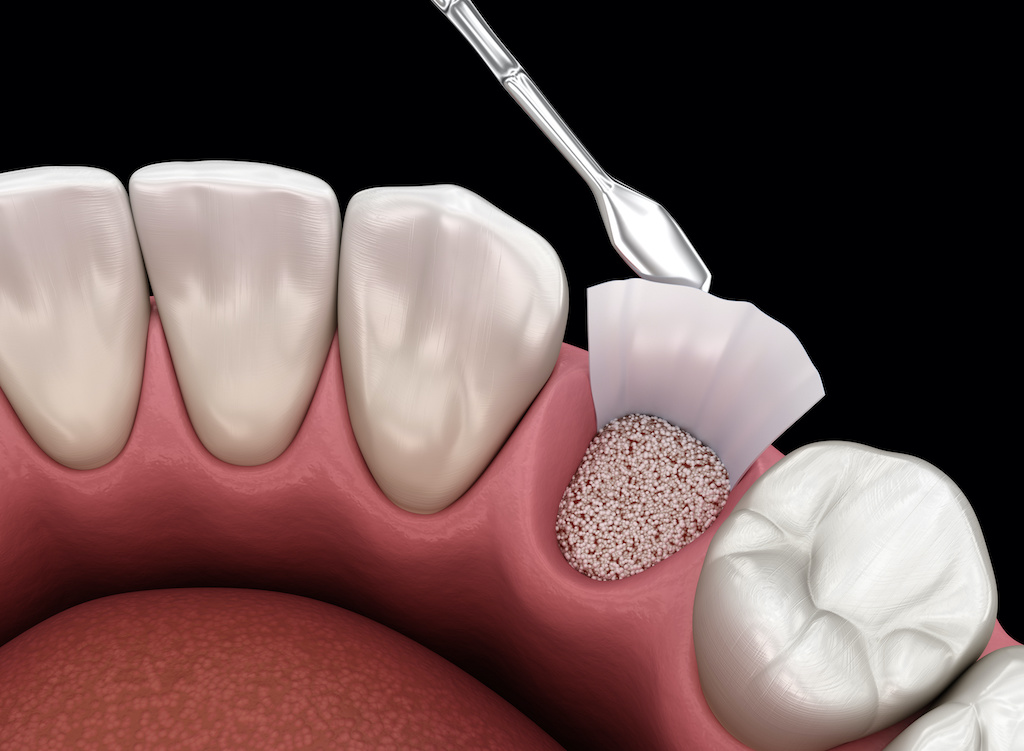
Understanding Bone Augmentation: What It Is and Why You Might Need It
Bone augmentation is a crucial procedure in modern dentistry, especially when it comes to preparing your mouth for dental implants or addressing severe bone loss. If you’re considering dental implants or have been advised by your dentist that you may need bone augmentation, it’s essential to understand what this procedure entails and why it’s necessary.
What is Bone Augmentation in Dentistry?
Bone augmentation refers to a group of procedures that are designed to rebuild or regenerate bone in areas where it has been lost or is insufficient. In the context of dentistry, bone augmentation is often required to create a solid foundation for dental implants or to restore the natural contours of the jawbone.
Bone augmentation dental treatments are used to prepare the jawbone for implants or to rebuild areas affected by bone loss due to periodontal disease, trauma, or tooth loss. Common techniques include bone grafting, where bone material is added to the jaw, and guided bone regeneration, which encourages new bone growth. These procedures ensure that there is enough bone structure to support dental implants and maintain the overall health of your mouth.
Why Might You Need Bone Augmentation?
There are several reasons why a patient might need bone augmentation. One of the most common reasons is tooth loss. When a tooth is lost, the bone around the missing tooth begins to deteriorate over time, a process known as bone resorption. Without the stimulation that a tooth root provides, the jawbone gradually shrinks and loses its density. This can make it difficult or even impossible to place a dental implant without additional support from bone augmentation.
Another common reason for bone augmentation is periodontal disease. Periodontal disease, also known as gum disease, is an infection of the tissues that hold your teeth in place. When left untreated, it can lead to the destruction of the supporting bone structure. This bone loss can compromise the stability of your remaining teeth and may require bone augmentation to restore the lost bone mass and ensure the long-term health of your mouth.
Trauma or injury to the jawbone is another scenario where bone augmentation might be necessary. Accidents or physical trauma can result in significant damage to the bone, leading to fractures or bone loss. In such cases, bone augmentation is often needed to repair and rebuild the affected area, allowing for proper healing and the possibility of future dental restorations, such as implants.
Some patients may have congenital bone deficiencies or developmental issues that result in insufficient bone mass in certain areas of the jaw. These deficiencies can make it challenging to achieve a successful dental restoration without first addressing the lack of bone. Bone augmentation procedures can help build up these areas, providing the necessary support for implants and improving the overall structure and appearance of the jaw.
Benefits of Dental Bone Augmentation
The benefits of dental bone augmentation go beyond just preparing your mouth for implants. By restoring the natural contours of your jaw, bone augmentation can improve both function and appearance, giving you a more youthful and healthy smile. It also plays a crucial role in maintaining the overall health of your jawbone, preventing further bone loss and potential complications such as shifting teeth, changes in facial structure, and difficulties with chewing and speaking.
Additionally, dental bone augmentation can prevent the “sunken-in” appearance that often occurs when significant bone loss is left untreated. This not only has aesthetic benefits but also contributes to better oral function and comfort. For those who have lost multiple teeth, bone augmentation can be the key to enabling the placement of dentures or other dental prosthetics, ensuring a stable and comfortable fit.
Bone augmentation is a versatile and essential procedure that addresses a range of issues related to bone loss in the jaw. Whether due to tooth loss, periodontal disease, trauma, or congenital conditions, bone augmentation provides the foundation needed for successful dental restorations and long-term oral health.
The Bone Augmentation Process
The process of bone augmentation begins with a thorough consultation and assessment by your dentist. During this consultation, your dentist will evaluate the condition of your jawbone and discuss the best options for augmentation bone procedures that suit your specific needs.
The bone augmentation procedure itself involves placing graft material into the area where bone is deficient. This can be done using your own bone (autograft), donor bone (allograft), animal bone (xenograft), or synthetic materials. Once the graft is in place, it will gradually integrate with your existing bone, creating a stronger and more stable foundation. Recovery typically involves a period of healing where the grafted bone material bonds with your natural bone. Your dentist will provide you with detailed aftercare instructions to ensure a smooth recovery.
Types of Bone Augmentation
There are several different methods and materials used in bone augmentation dental procedures. Autografts, which use bone from your own body, are often considered the gold standard due to their high success rates. Allografts, or donor bone, and xenografts, which use bone from animals, are also commonly used and are effective options for many patients. Synthetic materials, such as hydroxyapatite or other bone substitutes, can be used as well and are particularly useful in cases where natural bone sources are not viable.
Each type of graft material has its own advantages and disadvantages. Autografts offer the best integration but require an additional surgical site. Allografts and xenografts are readily available and eliminate the need for an additional procedure but may have a slightly lower success rate. Synthetic materials are versatile and pose no risk of disease transmission but may not integrate as naturally as biological grafts.
Success Rates and Potential Risks of Bone Augmentation Surgery
Bone augmentation procedures generally have high success rates, particularly when performed by experienced dental professionals. However, like any surgical procedure, there are potential risks, including infection, graft rejection, or insufficient bone growth.
To minimize these risks, it’s crucial to follow your dentist’s aftercare instructions carefully and attend all follow-up appointments. Ensuring that you are in good overall health can also contribute to a successful outcome.
Choosing the Right Dental Professional for Bone Augmentation
Selecting the right dentist for your bone augmentation procedure is critical. Look for a dentist with extensive experience in bone augmentation dental procedures and a proven track record of successful outcomes like Dr. Michael Smith here at Tempe Family Dentistry.
During your consultation, don’t hesitate to ask questions about your dentist’s experience, the types of materials they use, and what you can expect during the recovery process. An experienced dental professional will be able to guide you through the process and provide the best care possible.
Bone augmentation is a vital procedure that can significantly improve your oral health and ensure the success of dental implants. If you’ve been told you might need bone augmentation, don’t hesitate to consult with a qualified dental professional. Tempe Family Dentistry is here to help you through every step of the process. Contact us today at (480) 839-0330 to schedule your consultation and take the first step toward restoring your smile and improving your oral health.
